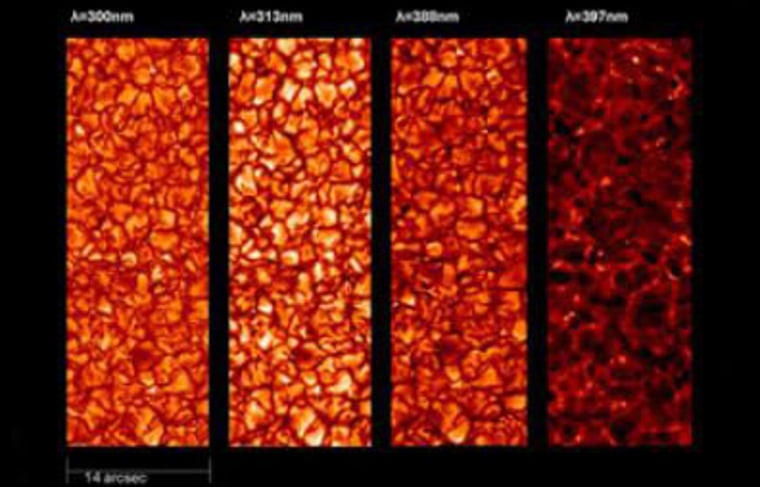The bubbling, roiling surface of the sun has been imaged in unprecedented detail, shedding light on the processes at work on the solar surface.
Images of transient dark spots, the sun's seemingly granulated texture and moving packets of gas were snapped by the SUNRISE balloon-borne telescope.
SUNRISE, the largest solar telescope ever to have left Earth was launched from the ESRANGE Space Centre in Kiruna, northern Sweden, on June 8. The 6-ton telescope is dangling from a gigantic helium balloon with a diameter of 427 feet.
After launch, SUNRISE reached a cruising altitude about 23 miles above the Earth's surface. At this height, the telescope is in a layer of the Earth's atmosphere (the stratosphere) with observing conditions similar to those from space. Air turbulence isn't a factor for SUNRISE as it is for telescopes on the ground, and ultraviolet light from the sun can be viewed, which would be blocked out by ozone at the surface.
During its five-day flight, SUNRISE gathered 1.8 terabytes of observation data. Scientists have only just begun analyzing the data, though the first findings are already promising.
Sun's magnetic field strength
Of particular interest to astronomers is the connection between the strength of the sun's magnetic field and the brightness of tiny magnetic structures on its surface. Since the magnetic field varies in an 11-year cycle of activity, the increased presence of these foundational elements brings a rise in overall solar brightness, resulting in greater heat input to the Earth.
The variations in solar radiation are particularly pronounced in ultraviolet light. During its stratospheric flight, SUNRISE carried out the first-ever study of the bright magnetic structures on the solar surface in this important range of the sun's spectrum. Previously these structures could only be studied by computer model representations.
"Thanks to its excellent optical quality, the SUFI instrument was able to depict the very small magnetic structures with high intensity contrast, while the IMaX instrument simultaneously recorded the magnetic field and the flow velocity of the hot gas in these structures and their environment," said Achim Gandorfer, project scientist for SUNRISE at the Max Planck Institute for Solar System Research in Germany.
After completing its mission and separating from its balloon, SUNRISE parachuted safely down to Earth on June 14, landing on Somerset Island, a large island in Canada's Nunavut Territory situated in the Northwest Passage, the seaway through the Arctic Ocean between the Atlantic and the Pacific.
SUNRISE is a collaborative project between the Max Planck Institute for Solar System Research in Katlenburg-Lindau and partners in Germany, Spain and the United States.
